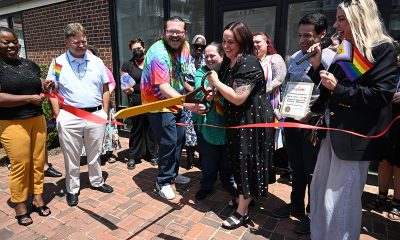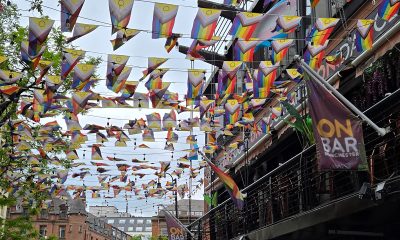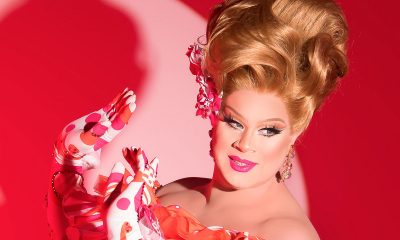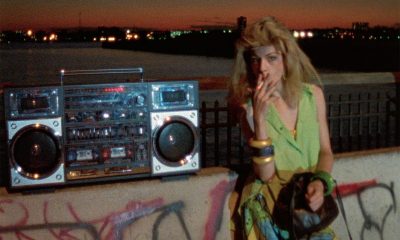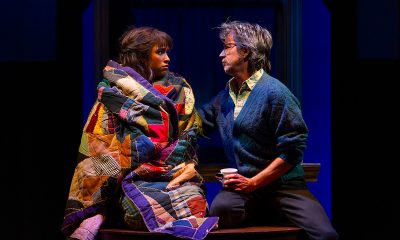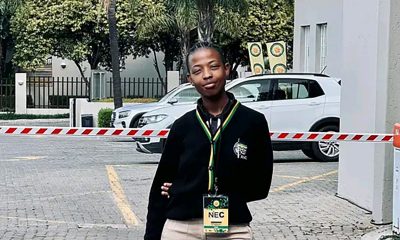a&e features
Paradise lost: Remembering the popular Rehoboth men’s guest house
Beach town’s pioneering B&B welcomed gay clientele before arrival of AIDS
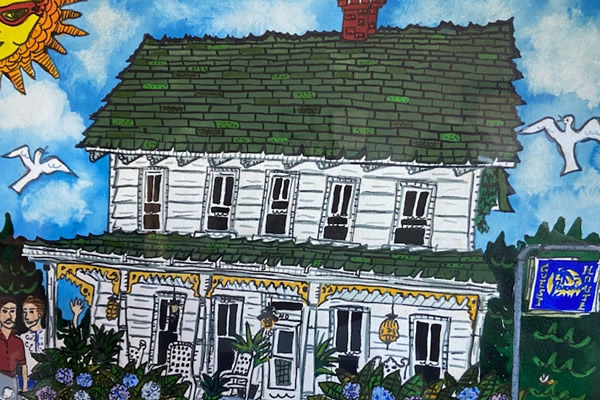
“What hath night to do with sleep?” John Milton, A Journey to Paradise
In February 1987, 30-something Bill Courville was at his Mt. Pleasant neighborhood home. He opened the new edition of the Washington Blade. As usual, he read it from beginning to end. With a Ph.D. in psychology, Bill enjoyed the classifieds. It lifted his spirits after reading obituaries of gay men and news of meager AIDS funding from the Reagan administration. Sandwiched between personals and escorts were real estate sales listings, including a one-inch ad about a B&B in downtown Rehoboth Beach, Del.
Bill thought about his youthful days living in New Orleans and working at the Maison De Ville, a small dusty red stucco painted guest house overlooking Toulouse Street. There Tennessee Williams had once lived while penning “A Street Car Named Desire” — when not sipping Sazarac cocktails in the garden courtyard.
He circled the ad and placed it on the kitchen counter for his lover, Bob, to read. The couple had met two years earlier crossing the P Street Bridge and had gradually merged their lives. After Bob looked at the ad, Bill suggested: “Let’s go look at this! We will have a business and an income — and a place to live!” Born in Minnesota, Bob Jerome, the more cautious of the pair, had grown up in California, attending college in Claremont and later working as a Senate staffer. Like Bill, he had a doctorate and traveled throughout the world before their P Street encounter. Unlike Bob, however, Bill never had been to Rehoboth. Nevertheless, Bill insisted this could be their next adventure or at least an excuse to visit the shore off-season.
“It’s a great seasonal resort,” Bob responded positively. “Everybody goes there. There’s gay life!”
The next weekend, they crossed the Chesapeake Bay Bridge and drove to Paradise. Rehoboth was mostly shuttered. But the Renegade bar was open at the fringe of town as was the Blue Moon along the gaying Baltimore Avenue. Driving one street over, they arrived at 40 Maryland Ave.
John, the Realtor, whose lover “Dolly” performed at the Moon, met the couple at the 19th-century house. “It was pretty awful,” remembers Bill. The fatigued Paradise Guest House sign was washed-out and the wide front porch with its handcrafted trellis lusted for paint. The pipes were drained. There was no heat or electricity. There were slivers of mirrors glued on living room walls, a disco ball hanging from the ceiling, 1930s over-stuffed maroon chairs, and yard sale grade furniture facing an old TV. The scent of stale cigarette smoke lingered in the ceilings and walls.
As they wandered through the 28 rooms — most barely wide enough for a floor mattress with a thin plastic sheet and an occasional odd-fitting dresser — they eyed stacks of men’s magazines (Honcho, Mandate, Bound & Gagged), iconic videos like “Boys in the Sand,” “Stryker Force,” and “Pacific Coast Highway,” along with chests of dildos in every imaginable size. Off the living room, a narrow passageway at a left angle to the main corridor led to the first-floor bedrooms. At the end was a trap door. They didn’t venture down. “Seasonal resorts like the Paradise were kind of like bars,” Bill explains. “They look great at night but don’t look at them during the day.”
On their drive back, the couple chatted about the venture. “I told Bill that if we were going to invest, he needed to run it so we could learn the business.” Bob knew his income would cover their personal expenses as long as Bill was willing to do the day-to-day management. “We were youngish. I don’t think we thought about what a massive undertaking it was…. But it seemed right.”
After purchasing the property, they along with some friends had just a few months before the 10-week season began on Memorial Day weekend. “We’d drag them down there and make them work, saying, ‘Oh, you can go to the beach.’ But, of course they never did go as it was always cold and rainy.” Bill wondered, “Does the sun ever shine here?”
Those next weeks were frantic: discarding discolored mattresses and sex toys; tearing out faux bedroom walls to restore the original 14 rooms; buying new white wicker furniture; upgrading the bathrooms, deck, and kitchen. Everything was thoroughly cleaned. Fresh white paint glistened on the walls and gray-painted floors replaced piles of tattered, sandy rugs. A local lesbian contractor built sturdy outside showers replacing a rickety wooden stall connected by a water hose and lined with reflective aluminum foil — designed more for strutting than showering.
“It was a huge undertaking,” admits Bill. “Everything we had was sunk into it. It had to be open!” He remembers one man calling a few days before asking if he could change check-in to Wednesday. “No, you can’t,” Bill said flatly. “You can come Friday at 2 o’clock, but not one minute sooner!”
With little time to advertise in this pre-Internet era, they did their best to explain the changes to former guests, beginning with its new name: The Rehoboth Guest House. More importantly, it now was open to lesbians as well as straights and there was no smoking. “We had a mix of friends,” says Bill. “So it would be gay-owned and operated but pretty much open to whoever wanted to come…. We had been discriminated against for most of our lives. If you don’t want to come you don’t have to.”
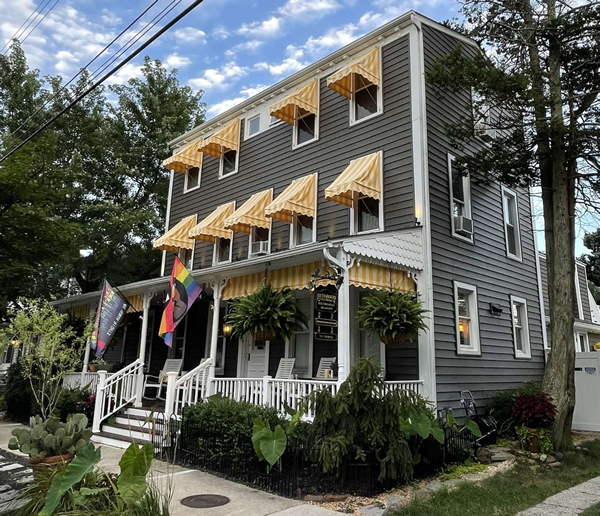
Remembering Paradise
Reactions from Paradise veterans varied when Bill and Bob discarded the blue, white, and yellow “Paradise Guest House” sign and, more importantly, its ethos of male eros. One of the new owners’ early supporters was Charlie Allen, who worked in the Baltimore schools but summered in Rehoboth. “He was writing a book,” Bill reveals, “called ‘Summer Sisters’… they were sisters for the summer.” Bob interjects, “The other part of the title was ‘Some Are Not.’ So, it was ‘Summer Sisters [pronounced Some Are Sisters]: Some Are Not.’Charlie died before publishing his book—which has never been found.
Unlike Charlie, “some hardcore folks were upset,” Bob recalls. “This used to be a gay male oasis” where men could “be themselves: wearing dresses; walking around naked; having piercings everywhere. They could get out of their suits and live the lives they wanted with people like them.” In an understanding tone, Bob adds: “That’s hard to take away.” The Paradise was a safe spot not only for Philadelphia accountants, D.C. staffers, and Baltimore teachers, but college kids enjoying summer break, career embarking twinks, and closeted locals seeking safe harbor.
Charlie was best friends with the German-accented Paradise owner Herbert Koerber and his boyfriend, Alvarado Ortiz-Benavides, whom everyone called “Mami”— colloquial Spanish for sweetheart. A gregarious man with fading hair and a reddish beard, Charlie often helped Mami with housekeeping and other chores. Mostly, though, he just enjoyed the sexual freedom of Paradise and the camaraderie among male guests. Some returned each year for a week, others visited more frequently for long weekends, and a few stayed the entire summer. Most guests were younger than Charlie’s 40 odd years, but everyone seemed to get along.
Most of Koerber’s clientele came from word-of-mouth advertising, although there was a classified ad in summer issues of the Washington Blade: “friendly guesthouse, close to beaches and bars.” One of the very first media stories about gay Rehoboth appeared in the May 1980 issue of this iconic paper. It described Paradise as “utterly comfortable” and quoted 38-year-old Herbert: “Tell people I can put them up — maybe even give them a discount during the week — but on weekends, after the bars close, my lobby will be packed.”
Before Herbert opened Paradise, in 1979, there were no openly gay-owned or gay-friendly advertised guest houses in Rehoboth. The Sandcastle, a decrepit speakeasy-like rooming house owned briefly by several gay men, had burnt to the ground four years earlier. The grand Pleasant Inn Lodge, hosted by the reclusive, debonair bachelor Peck Pleasanton and his octogenarian mother, Bessie, welcomed an occasional well-behaved “single” gentleman.
During eight seasons, Paradise evolved as did Herbert and Mami. The two were an odd pair. Herbert, a “fussy queen” who swore like a sailor, was tall and thin with longish hair and a handlebar mustache. He was always tanned even though his forehead would get beet red given his German complexion. The much shorter Mami, whose family was from South America, was soft-spoken and very sweet. Compared to the larger-than-life Herbert, he was less memorable to guests. Bob describes Herbert as “the German businessman. Mami was the onetime boy-toy.” They wintered in Key West, operating a gift shop and hawking kitsch souvenirs like black velvet paintings and seashell coasters.
Herbert monetized every aspect of Paradise, creating a sexual Disneyland. With 28 “teensy rooms the size of bathhouse cubicles,” there could be upwards of 50 men checked-in along with their friends and friends of their friends, wandering in during the night. However, the number of bathrooms — two full baths and two halves — did not expand. “It was shabby and crowded, but we were young and didn’t care,” one Paradise regular muses. “It had a reputation. It was our party house.”
The second floor became clothing optional with men often walking around with towels during midnight hours. Plywood partitions were set between rooms with guests on one side having a window and the other windowless. Herbert’s “summer curtains” served instead of doors, which allowed air (and guests) to circulate. Those with bedroom windows overlooking the sundeck could easily extend an invitation to a coconut-lotioned twink or a weightlifting hunk. “Everything went on at the deck and in the windows and rooms behind it,” recalls a frequent guest. There were late Saturday afternoon happy hours and skit contests. Staging was festive, if not overly decorative, with a jerry-rigged backstage area for costume changing. A raucous backyard crowd cheered contestants.
Originally, there was a huge gabled attic bedroom that required ascending a steep stairway. Herbert slashed it into a tiny single air-conditioned room with the remaining space transformed into an after dark playground full of mattresses with an aroma of poppers and pot. “Herbert turned every square inch of that attic into a bed sleeping sex area. It was masterful,” Bob says in a praiseworthy tone. “Every inch was geared toward pleasure” And, as he and Bill later discovered, There was a leather sling in the “dungeon,” a 10 x 12 cinder block walled room accessed only from the first floor trap door.
Room rates were low and backyard camping was just $5 for those bringing tents. Campers, though, had to be late night partiers. Before dawn, visitors often entered from the alley along a little path leading to the unlocked side gate. Nocturnal grunts, gasps, and groans harmonized to sounds of crashing waves. Back then, as one Paradise regular stresses, “Sex wasn’t a taboo thing. It was like going to lunch! It was as common as going for a cocktail.”
During the day, Herbert was often found in his flip-flops, T-shirt, and khaki shorts, puttering in the garden or tending to his beloved lacecap hydrangeas gracing the front yard. Herbert was estranged from his German-speaking family so Paradise regulars became his family. Friendly, he knew everyone by their first name but don’t ask to reserve a specific room. One returning guest remembers phoning Herbert for a reservation and requesting a first-floor room with a door: “Oh, honey!” Herbert laughed. “It’s just first come, first served.”
Herbert did repairs only when absolutely necessary. But he’d always be painting, using just one color: white. The exception was the wrap-around front porch, lined with rocking chairs, which had a gray floor and ceiling along with knob and tube wiring. Throughout the house, guests used it to hang clothes since there were no closets.
In the early to mid 1980s, Paradise thrived as a money making machine — a bathhouse on the beach. As the number of gay-owned restaurants and bars multiplied along with accompanying media attention, more gay men vacationed at Rehoboth and visited Paradise. “There was a routine,” one recounts. “You’d get up late. Get yourself down to the gay beach. Do a day at the ocean, getting too much sun. Then there was happy hour at the Moon. You had to be there and have a nice look. Then you’d go back, take a nap, and then go to dinner. Then, onto the Renegade!”
Herbert provided a weekend shuttle to the Renegade. About 10 o’clock, he’d drive up in his light colored blue and white ’60s VW van, hop out and, as a regular recollects, “Scream down the hallways: ’Get your asses down here!’” He shuttled guests back-and-forth, with the last pick-up at 1. ”I remember Herbert telling people in his heavy accent, ‘If you miss the last bus, you have to walk the fuck home!” But his gruffness masked protectiveness. ”He’d warn them he was going and he would even count!” Another frequent visitor remembers Herbert “as the kind of guy you’d call at 3 o’clock in the morning to say, ‘I’m in jail.’ And he’d be there.”
Paradise Lost
In 1980, reports surfaced about clusters of young gay men contacting Pneumocystis pneumonia. Granted the majority of infections and deaths from this “gay cancer” were in New York City and San Francisco, but the Washington Blade published a landmark front-page story, “Rare, Fatal Pneumonia Hits Gay Men,” inJuly 1981.
Herbert began to worry. One guest, living in New York City and volunteering as an AIDS buddy, remembers porch conversations with Herbert. ”He was talking about buying a second one. Then he said, ’I’m concerned since so many people are getting AIDS, I’m not sure whether or not I’ll have a clientele.’”
For many gays, Paradise was a rare time to be themselves and to enjoy the camaraderie and support from other men at a beach resort. Sadly, for some, it was also a death sentence. Sexual desire and psychological denial coupled with governmental inaction and public apathy fueled the AIDS pandemic.
After the 1986 summer season, Herbert and Mami sojourned, as usual, to Key West; Herbert never returned. ”I can remember being surprised to hear that he was ill,” laments a longtime patron. ”He went quickly; we had no indications he was ill.”
Herbert died a week before Bill and Bob opened on Memorial Day weekend. Mami was with him until the end. Like Paradise, he disappeared into history and, along with Herbert and many of his guests, would be remembered by few.
James Sears’ latest book, “Behind the Boardwalk: Queering the History of Rehoboth Beach” will be published next year. Tom Kelch, manger of the Rehoboth Beach Guest House, contributed research to this article.
a&e features
From Prohibition to Pride: Queering the District podcast reveals local LGBTQ history
The new podcast explores the hidden history and enduring impact of queer spaces in Washington, D.C.
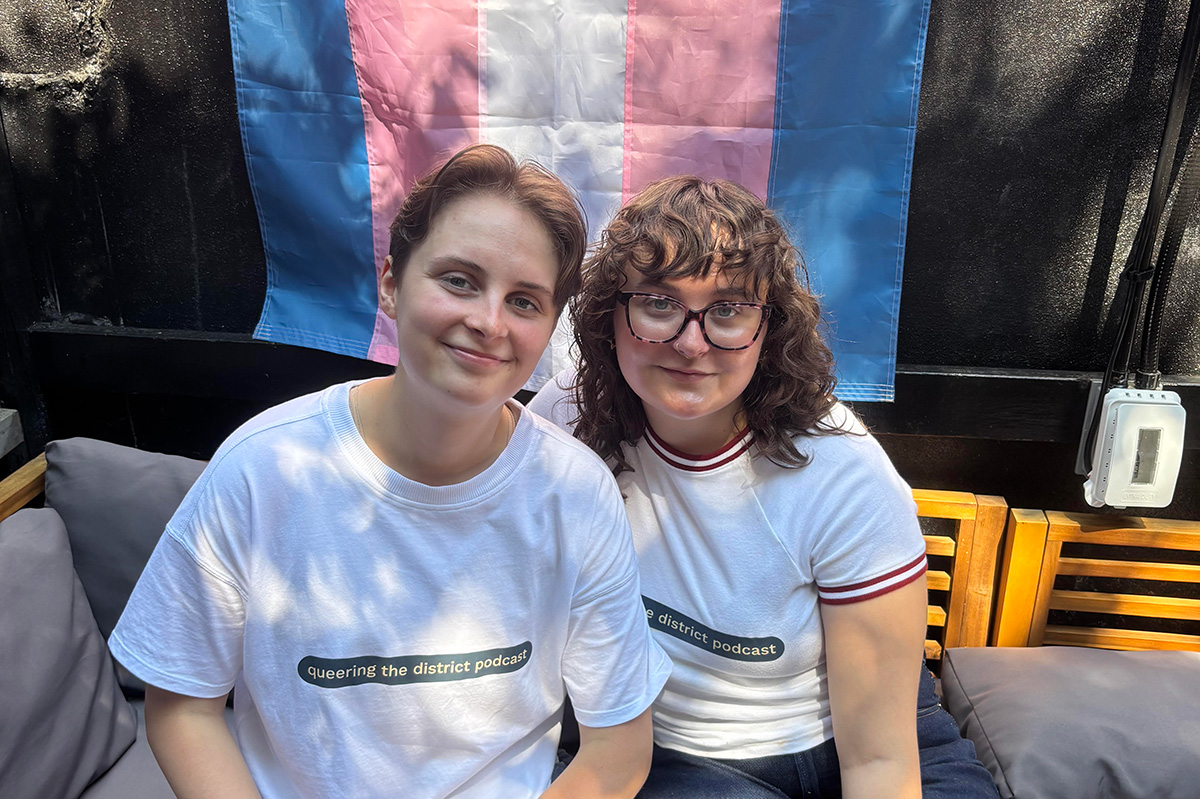
On June 25, as Pride month inched toward its end, three queer creators launched an ambitious project to honor the spaces that built D.C.’s LGBTQ community—and connect them to today’s queer life. The first episode of their podcast, Queering the District, hit streaming platforms that day, aiming to spotlight what host and co-creator Abby Stuckrath calls “third places”: bars, clubs, and gathering spots that have served as hubs for queer life across the city.
Each episode of the 10-part series delves into a different piece of D.C.’s queer past—from landmark clubs to untold personal stories—told through the voices of drag legends, activists, DJs, historians, and patrons who lived it. The show also threads together personal experiences from today’s community, bringing the listener on an auditory journey from Prohibition-era speakeasies to contemporary nights out at places like As You Are or Saints & Sinners.
Abby Stuckrath, alongside her sibling Ellie Stuckrath, and producer Mads Reagan, make up the podcast’s creative team. A recent journalism graduate of American University, Abby told the Blade that her passion for queer storytelling began during college—and that D.C. itself played a defining role in shaping her queer identity.
“I went to American University. I graduated last year and studied journalism. When I was in school, I always wanted to focus on queer stories – especially in D.C., because I’m from Denver, Colorado, I’ve never lived in a place like this before. D.C. has always just kind of been a place I call home when it comes to my queer identity.”
But breaking into the media to tell those stories wasn’t easy. Stuckrath quickly learned that editorial support—and funding—for queer-focused projects is limited. So she decided to do it her own way.
“I kind of found out that if you want to tell stories, you kind of have to do it on your own– especially when it comes to queer stories. There’s not a lot of people begging for us to talk about queer people and to pay you for it. So I was like, ‘Okay, let’s just do it on my own.’”
The idea for the podcast first took root in conversations with Ellie, Abby’s sibling and biggest supporter. Ellie had also moved to D.C. to find more space to explore and express their queer and gender identities. Together, the two began shaping a vision that would combine storytelling, sound design, and grassroots community input.
“I was like, ‘I don’t know what exactly I want to do yet, but I want it to be queer, and I want it to be about D.C., and it’s going to be called Queering the District, and we’re going to find out what that means.’ And Ellie is my biggest supporter, and my best friend. And they were like, ‘Hell yeah. Like, let’s do this.’ And so we decided to just do it together.”
The name stuck—and so did the mission. The team began researching queer D.C. history and found a city overflowing with stories that had rarely been documented, especially in mainstream archives.
“We started looking up the history of queer culture in D.C., and it kind of just clicked from there,” Stuckrath said. “I did not know anything about how rich our history is in the city until one Google search, and then I just kept learning more and more. I was kind of pissed because I studied gender studies in school in D.C. and didn’t learn shit about this.”
Season one focuses on the role of third places—non-work, non-home spaces where queer people could gather, exist fully, and build community.
“Third places have always been the epicenter of queer life… places outside of just your own personal home, because sometimes that isn’t a safe place. And of course, the work most commonly in the past and still today, isn’t a safe place for queer people to be full of themselves. So like, bars were the first place for queer people to really thrive and meet each other.”
To make the show participatory, Queering the District includes a twist: a voicemail line where anyone can call in and share a memory or question. The team calls the phone “Fifi”—a nod to the kind of retro guestbooks often used at weddings, but reimagined for queer nightlife and history.
“We wanted to find a way for people to share their stories with us anonymously… so even though we start in Prohibition, we wanted to connect it to now—like, those people who were singing jazz to each other in a white queer bar are connected to you singing karaoke on a Sunday night at your favorite gay bar. We’re all interconnected by this third place of queer bars in D.C.”
Those connections are emotional as well as historical. While building the series, one realization hit Stuckrath particularly hard: the immense loss of queer spaces in D.C., especially in neighborhoods that have since been heavily redeveloped.
“Every time I go to a Nats game, I think about, well, this just replaced five gay bars that used to be here. It used to be the home of Ziegfeld’s… Tracks, which was almost 2,000 square feet, with a volleyball court in the back, a fire pit, and iconic light show. I just didn’t know that we had that, and it made me sad for the queer elders that are in our city now who walk the streets and don’t see all those places they used to call home.”
That sense of loss—alongside the joy and resilience of queer community—is what the show aims to capture. As the podcast continues, Abby hopes it serves as both a celebration and an educational tool, especially for young LGBTQ people arriving in D.C. without realizing the queer foundations they’re walking on.
“D.C. is a unique city, and specifically young queer people who are hoping to move to the city—to know that you’ve got to know your history to be here. I hope this serves as an easier way for you to consume and learn about queer history, because queer history defines how we move in life.”
And for all the voices still left out, Abby is clear: this podcast is an open door, not a final word.
“This is a perfectly imperfect podcast. We should just be a starting point. We shouldn’t be the ending point.”
New episodes of Queering the District drop every Wednesday on all major platforms.
a&e features
Doug Spearman takes his chance
‘Noah’s Arc: The Movie’ debuted on Paramount+ last month
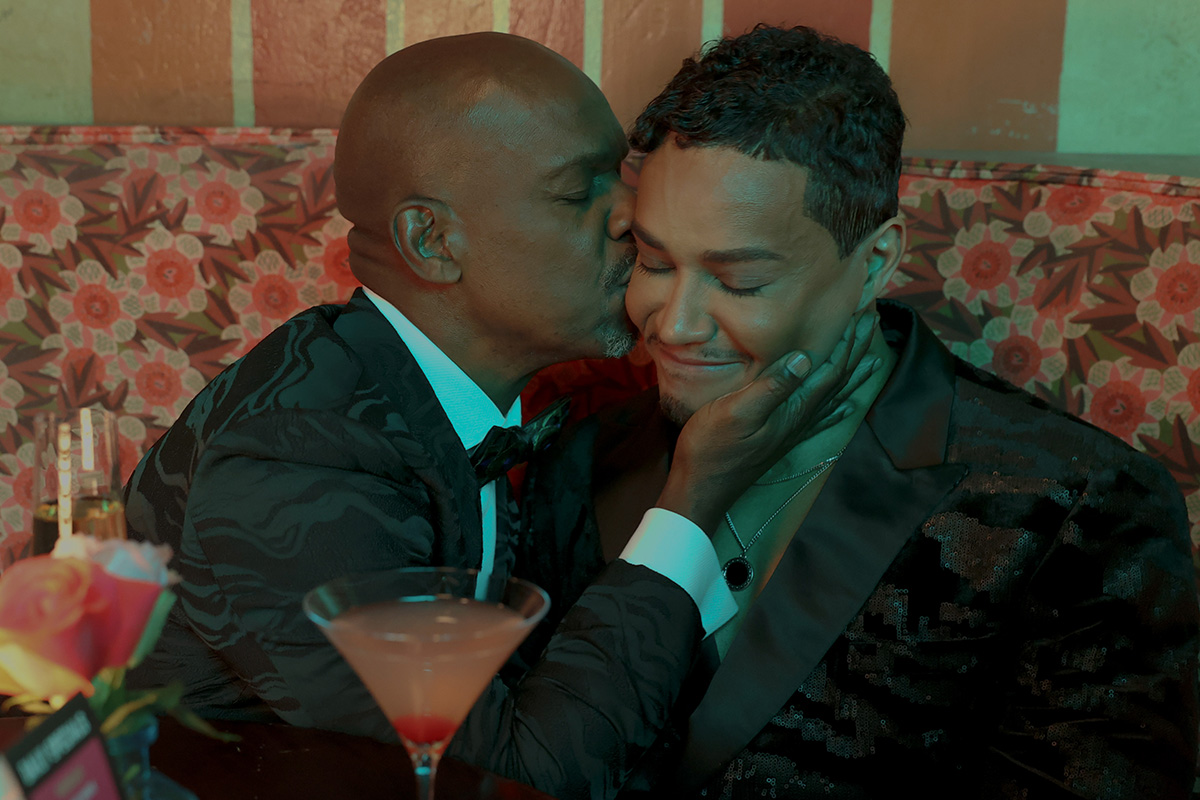
There’s no question that when Patrik-Ian Polk’s series “Noah’s Arc” premiered on Logo 20 years ago, it was a groundbreaking creation. The story of a group of Black gay men and their wonderful friendship. The titular arc was that of the cute main character, Noah (Darryl Stephens), and his close-knit circle of friends, including Chance played by gay actor Doug Spearman. This compelling and loving fraternity may, in fact, be what brought viewers back repeatedly, including a 2008 movie, “Noah’s Arc: Jumping the Broom,” as well as the 2020 “Noah’s Arc” short, and now, a new full-length feature “Noah’s Arc: The Movie,” debuting on Paramount+ on June 20. In the movie, filled with equal measures of laughs and tears, Chance, who has faced a devastating loss, finds his dependable friends there, ready to support and comfort him at a moment’s notice. I had the pleasure of speaking with Spearman the morning of the streaming premiere of “Noah’s Arc: The Movie.”
WASHINGTON BLADE: Doug, since the early 2000s, when the “Noah’s Arc” series premiered on Logo, you have been playing the character of Chance, including in the latest installment, “Noah’s Arc: The Movie.” What was it about Chance that appealed to you as an actor?
SPEARMAN: When Patrik (-Ian Polk) called me to ask me to play him (Chance), I was at JFK airport in the baggage claim, waiting for a suitcase. He explained what the part was. The thing that stuck out to me was the fact that Chance was in a long-term relationship with another Black man. And, they had a child; they had a 4-year-old daughter named Kenya. I had never seen two Black gay men raise a child on TV before. I thought it was the most revolutionary thing I’d ever seen. I immediately thought I’ve got to do this because that was something nobody had seen. I thought it was incredibly important to take the part.
BLADE: “Noah’s Arc: The Movie” was, once again, written and directed by Patrik-Ian Polk, who you just mentioned, is the creator of the entire franchise. What’s the secret to your long-standing working relationship?
SPEARMAN: [Laughs] the whole team, all of us, are like a band of brothers. We fight like brothers, we come together like brothers, we hash things out, we talk, because we’re all very different from our characters. I think the challenge of playing these guys and then uplifting these men, playing a part, especially something written by Patrik, is like solving a math equation. There’s always a challenge that’s enjoyable for me as an actor: to try to find out what it is that Patrik wants, and then how do I do it.
BLADE: I think you do a very good job of it.
SPEARMAN: Thank you very much
BLADE: In the years between “Jumping the Broom” and the new full-length movie, many changes have occurred, and the story addresses some of them, including gay widowhood, which is something that the aging community is now confronting, as well as mental health issues. Please say a few words about how you approached those subjects in the new movie.
SPEARMAN: I had a lot of loss in my life, right before we started shooting. Two months before we started shooting the first series, my mother died. I was going through the grief process through that whole first season. Since then, I’ve lost a lot of people in my life. In fact, when we started shooting the second season, the second week we were shooting, my ex died of a heart attack. I was having to fold that into what I was doing with my life on the set and off the set. You’ve got to show up and you’ve got to do your work. The first two seasons of “Noah’s Arc” are always tinged with the memory of grief. So, when I had to deal with the death that Chance faces (in the new movie), which is a significant death in his life, it wasn’t that hard to reach back, especially the scene in the graveyard. It was something that I unfortunately could pull from personal experience.
BLADE: Shifting gears, the movie features delightful cast surprises, including Jasmine Guy and TS Madison. Did you have a chance to interact with either or both when they were on set?
SPEARMAN: No, I didn’t have any scenes with Jasmine, and I missed her. I wish I had gotten to see her because I actually got to direct Jasmine for a CBS promo shoot for “Queen,” back in the early ‘90s. I had a huge crush on her when she was on “A Different World.” So, I really would have liked to reconnect. But TS and I got to see each other every day because I was in all her scenes. It was extraordinary being around somebody like that. That is one outspoken woman!
BLADE: Even though Beyoncé never makes an appearance in the movie, there’s a lot of talk about her. Would you say you are a Beyoncé fan?
SPEARMAN: Yes! I’m breathing! Yes, I’m a Beyoncé fan. I actually got the chance to meet her. I knew her mom. Her mom was extraordinary to me. She is in the second movie I directed. She also gave us a wedding gown to use in the very first scene of the movie. That family is extraordinarily important to me. Not only just to be a fan, but to be somebody who’s gotten to know them and work with them and see how hard they work. I don’t think anybody works as hard as Tina or Beyoncé.
BLADE: There was a recent news item about gay actor Benito Skinner of the Amazon Prime series “Overcompensating” being told not to bother auditioning for straight roles. As an out actor yourself, how important do you think it is for queer characters to be portrayed by queer actors, and vice versa?
SPEARMAN: Being queer is a multifaceted identity. There’s no one kind of queer person. I think finding the best actor that’s your first circle of casting. I think one of the joys about being an actor is that you get to play different parts. I play straight guys all the time. Dads and husbands and things like that. I think a lot of people are told not to do it. In fact, I wouldn’t be Chance if the actor who was originally cast as Chance hadn’t been pulled out of the series by his agents because they didn’t want him to play a gay character.
BLADE: That’s amazing! Thank you for sharing that. Without giving away too much, the ending of the movie is a little ambiguous, even ending with a question mark. If there was a “Noah’s Arc: The Movie” sequel, would you come back for that?
SPEARMAN: Yeah! A lot of it would depend on what Chance’s journey is going to be like. Patrik and I have conversations like that all the time. He’s very interested and supportive of input. I hope I would be, as we all would be, part of the creative growth with these characters. They live in Patrik’s head, and he writes them, but we’re the ones who have to flesh them out. It’s a conversation, it’s always a conversation.
BLADE: You are currently performing in Molière’s “The Imaginary Invalid” as part of the New Orleans Shakespeare Festival at Tulane. What has this experience been like for you?
SPEARMAN: It’s extraordinary! I started on stage when I was seven. There’s nothing like working with a live audience and having that immediacy. I’m working with an extraordinarily talented cast in a really great play, and I have some of the best scene partners I could ever want.
BLADE: Are there any upcoming film or TV projects you’d like to mention?
SPEARMAN: I’m still a writer, and I’m still a director, and I’ve still got scripts that I would like to make. I have a little something that’s a cross between “Treme” and “Bridgerton” that I want to do. I’m always trying to figure out what the next thing is.
a&e features
Visit Cambridge, a ‘beautiful secret’ on Maryland’s Eastern Shore
New organization promotes town’s welcoming vibe, LGBTQ inclusion
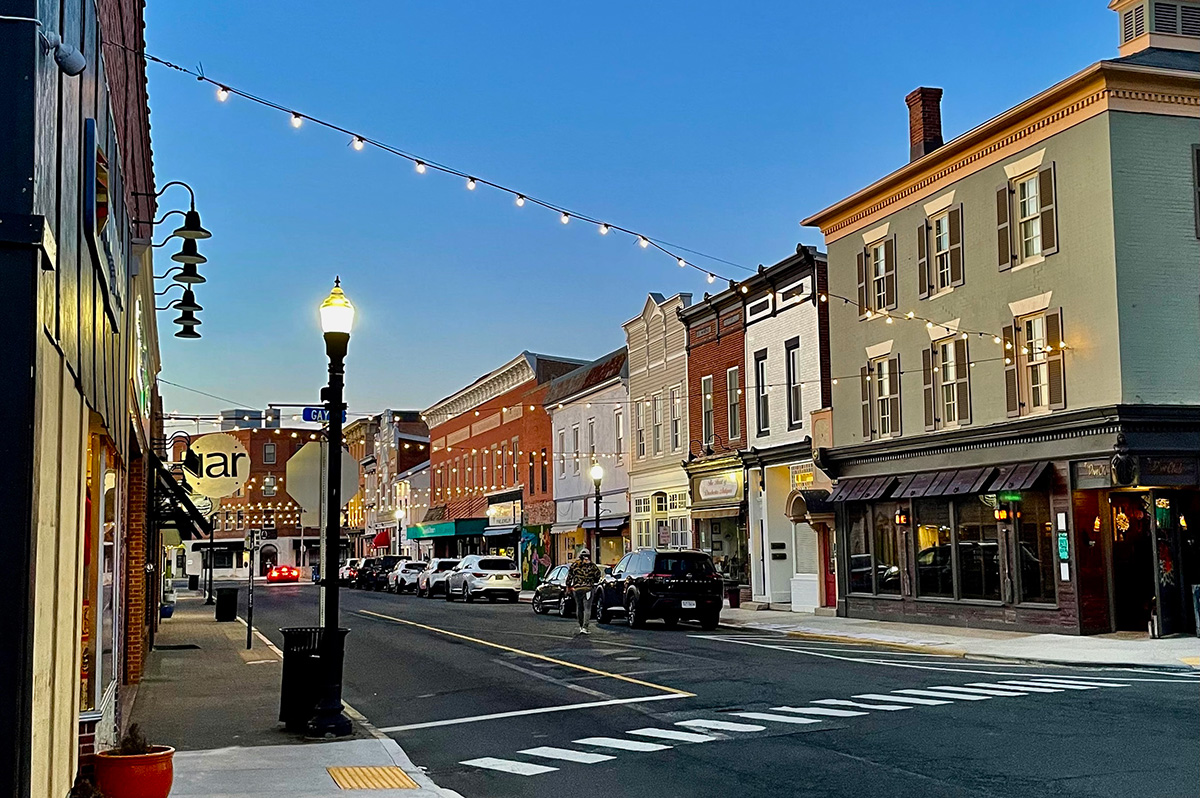
CAMBRIDGE, Md. — Driving through this scenic, historic town on Maryland’s Eastern Shore, you’ll be charmed by streets lined with unique shops, restaurants, and beautifully restored Victorian homes. You’ll also be struck by the number of LGBTQ Pride flags flying throughout the town.
The flags are a reassuring signal that everyone is welcome here, despite the town’s location in ruby red Dorchester County, which voted for Donald Trump over Kamala Harris by a lopsided margin. But don’t let that deter you from visiting. A new organization, Proudly Cambridge, is holding its debut Pride event this weekend, touting the town’s welcoming, inclusive culture.
“We stumbled on a beautiful secret and we wanted to help get the word out,” said James Lumalcuri of the effort to create Proudly Cambridge.
The organization celebrates diversity, enhances public spaces, and seeks to uplift all that Cambridge has to share, according to its mission statement, under the tagline “You Belong Here.”
The group has so far held informal movie nights and a picnic and garden party; the launch party is June 28 at the Cambridge Yacht Club, which will feature a Pride celebration and tea dance. The event’s 75 tickets sold out quickly and proceeds benefit DoCo Pride.
“Tickets went faster than we imagined and we’re bummed we can’t welcome everyone who wanted to come,” Lumalcuri said, adding that organizers plan to make “Cheers on the Choptank” an annual event with added capacity next year.
One of the group’s first projects was to distribute free Pride flags to anyone who requested one and the result is a visually striking display of a large number of flags flying all over town. Up next: Proudly Cambridge plans to roll out a program offering affirming businesses rainbow crab stickers to show their inclusiveness and LGBTQ support. The group also wants to engage with potential visitors and homebuyers.
“We want to spread the word outside of Cambridge — in D.C. and Baltimore — who don’t know about Cambridge,” Lumalcuri said. “We want them to come and know we are a safe haven. You can exist here and feel comfortable and supported by neighbors in a way that we didn’t anticipate when we moved here.”
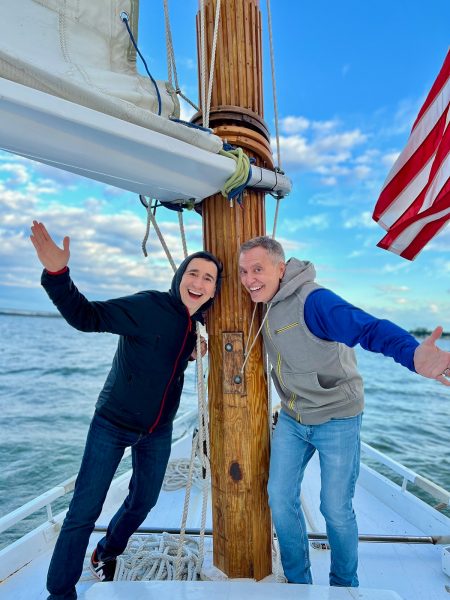
Lumalcuri, 53, a federal government employee, and his husband, Lou Cardenas, 62, a Realtor, purchased a Victorian house in Cambridge in 2021 and embarked on an extensive renovation. The couple also owns a home in Adams Morgan in D.C.
“We saw the opportunity here and wanted to share it with others,” Cardenas said. “There’s lots of housing inventory in the $300-400,000 range … we’re not here to gentrify people out of town because a lot of these homes are just empty and need to be fixed up and we’re happy to be a part of that.”
Lumalcuri was talking with friends one Sunday last year at the gazebo (affectionately known as the “gayzebo” by locals) at the Yacht Club and the idea for Proudly Cambridge was born. The founding board members are Lumalcuri, Corey van Vlymen, Brian Orjuela, Lauren Mross, and Caleb Holland. The group is currently working toward forming a 501(c)3.
“We need visibility and support for those who need it,” Mross said. “We started making lists of what we wanted to do and the five of us ran with it. We started meeting weekly and solidified what we wanted to do.”
Mross, 50, a brand strategist and web designer, moved to Cambridge from Atlanta with her wife three years ago. They knew they wanted to be near the water and farther north and began researching their options when they discovered Cambridge.
“I had not heard of Cambridge but the location seemed perfect,” she said. “I pointed on a map and said this is where we’re going to move.”
The couple packed up, bought a camper trailer and parked it in different campsites but kept coming back to Cambridge.
“I didn’t know how right it was until we moved here,” she said. “It’s the most welcoming place … there’s an energy vortex here – how did so many cool, progressive people end up in one place?”
Corey van Vlymen and his husband live in D.C. and were looking for a second home. They considered Lost River, W.Va., but decided they preferred to be on the water.
“We looked at a map on both sides of the bay and came to Cambridge on a Saturday and bought a house that day,” said van Vlymen, 39, a senior scientist at Booz Allen Hamilton. They’ve owned in Cambridge for two years.
They were drawn to Cambridge due to its location on the water, the affordable housing inventory, and its proximity to D.C.; it’s about an hour and 20 minutes away.
Now, through the work of Proudly Cambridge, they hope to highlight the town’s many attributes to residents and visitors alike.
“Something we all agree on is there’s a perception problem for Cambridge and a lack of awareness,” van Vlymen said. “If you tell someone you’re going to Cambridge, chances are they think, ‘England or Massachusetts?’”
He cited the affordability and the opportunity to save older, historic homes as a big draw for buyers.
“It’s all about celebrating all the things that make Cambridge great,” Mross added. “Our monthly social events are joyful and celebratory.” A recent game night drew about 70 people.
She noted that the goal is not to gentrify the town and push longtime residents out, but to uplift all the people who are already there while welcoming new visitors and future residents.
They also noted that Proudly Cambridge does not seek to supplant existing Pride-focused organizations. Dorchester County Pride organizes countywide Pride events and Delmarva Pride was held in nearby Easton two weeks ago.
“We celebrate all diversity but are gay powered and gay led,” Mross noted.
To learn more about Proudly Cambridge, visit the group on Facebook and Instagram.
What to see and do
Cambridge, located 13 miles up the Choptank River from the Chesapeake Bay, has a population of roughly 15,000. It was settled in 1684 and named for the English university town in 1686. It is home to the Harriet Tubman Museum, mural, and monument. Its proximity to the Blackwater National Wildlife Refuge makes it a popular stop for birders, drawn to more than 27,000 acres of marshland dubbed “the Everglades of the north.”
The refuge is walkable, bikeable, and driveable, making it an accessible attraction for all. There are kayaking and biking tours through Blackwater Adventures (blackwateradventuresmd.com).
Back in town, take a stroll along the water and through historic downtown and admire the architecture. Take in the striking Harriet Tubman mural (424 Race St.). Shop in the many local boutiques, and don’t miss the gay-owned Shorelife Home and Gifts (421 Race St.), filled with stylish coastal décor items.
Stop for breakfast or lunch at Black Water Bakery (429 Race St.), which offers a full compliment of coffee drinks along with a build-your-own mimosa bar and a full menu of creative cocktails.
The Cambridge Yacht Club (1 Mill St.) is always bustling but you need to be a member to get in. Snapper’s on the water is temporarily closed for renovations. RaR Brewing (rarbrewing.com) is popular for craft beers served in an 80-year-old former pool hall and bowling alley. The menu offers burgers, wings, and other bar fare.
For dinner or wine, don’t miss the fantastic Vintage 414 (414 Race St.), which offers lunch, dinner, wine tasting events, specialty foods, and a large selection of wines. The homemade cheddar crackers, inventive flatbreads, and creative desserts (citrus olive oil cake, carrot cake trifle) were a hit on a recent visit.
Also nearby is Ava’s (305 High St.), a regional chain offering outstanding Italian dishes, pizzas, and more.
For something off the beaten path, visit Emily’s Produce (22143 Church Creek Rd.) for its nursery, produce, and prepared meals.
“Ten minutes into the sticks there’s a place called Emily’s Produce, where you can pay $5 and walk through a field and pick sunflowers, blueberries, you can feed the goats … and they have great food,” van Vlymen said.
As for accommodations, there’s the Hyatt Regency Chesapeake Bay (100 Heron Blvd. at Route 50), a resort complex with golf course, spa, and marina. Otherwise, check out Airbnb and VRBO for short-term rentals closer to downtown.
Its proximity to D.C. and Baltimore makes Cambridge an ideal weekend getaway. The large LGBTQ population is welcoming and they are happy to talk up their town and show you around.
“There’s a closeness among the neighbors that I wasn’t feeling in D.C.,” Lumalcuri said. “We look after each other.”

